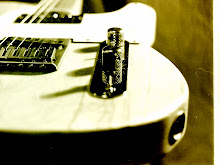The new Arcade Fire video for “We Used to Wait” off of their recent noteworthy CD, The Suburbs, has been getting some acclaim as a step forward in video technology and audience engagement. The reason being that it taps into media trends and hyper-consciousness about consumer-empowerment in the all-important realms of information and entertainment (I refuse to write “infotainment”). Heck, this single track, web-based video even has its own title (“The Wilderness Downtown”) and production credits.

The reason for the buzz is that this new video incorporates Google Earth images to “personalize” the narrative with depictions of the neighborhoods of our youthful years. Take a look. Enter your address and see what it reveals. What do you think? Was it what you expected? An accurate representation, conjuring up memories of yore?
Personally, I was more intrigued with the idea, than impressed with the execution – which, while amazing in some ways when you really think about it, was also ridiculously rudimentary. I was disappointed because (no fault of the band, Google or the producers) what was rendered was not a time machine-empowered representation of my youthful environs some 30-40 years ago (Google Earth was merely a sparkle in some scientists’ eye back then), but instead a modern-day overgrown, barely distinguishable clump of trees and vaguely familiar strips of woodchips lining the roadway. Suffice to say, we lived in the woods ... and it’s still woodsy today!
Nevertheless, it was, in fact, “The Suburbs,” albeit borderline rural ones, and much of the Arcade Fire’s new thematic work resonates with the experiences of my young neighbors and I growing up in the ’70s. The CD is worth checking out, especially if you like thoughtful, theatrical, somewhat orchestrated modern pop with some undeniably catchy hooks.
There’s no doubt, the video is trendsetting (generally, if not specifically). And, beyond the satellite and Internet-enabled techno-gimmickry, its multi-screen segmentation is creatively – if not a bit schizophrenically – implemented.
The whole concept reminds me of the music biz’s first forays into consumer-empowerment about 10 or 15 years ago when Peter Gabriel released some music that somehow enabled listeners to create their own mixes. (I never acquired any of those, so I can’t provide informed comment on them.) There was also Robert Plant and The Strange Sensation’s “Shine It All Around” single in 2005, which enabled proactive listeners to create their own rudimentary remixes via a “U-MYX Format.” This was a simplistic program included on the CD that allowed you to drop out selected instrument tracks (lead vocals, baking vocals, lead guitar, rhythm guitar, bass, drums, keyboards) from the mix for part or all of the song. Thus, at your own discretion, you could hear the a capella version, the instrumental version or the pseudo dub-rhythm version of the song.
... All small steps on the continuum of personal empowerment that pervades media today. It’s only a matter of time, I suspect, before we’ll be holographically projecting ourselves (in real time, no less) into our video entertainment.





Wow, thanks for pointing this out. Google Earth didn't have enough images of my old neighborhood (I lived on a dirt road) to make it recognizable, but pretty cool nonetheless.
ReplyDelete